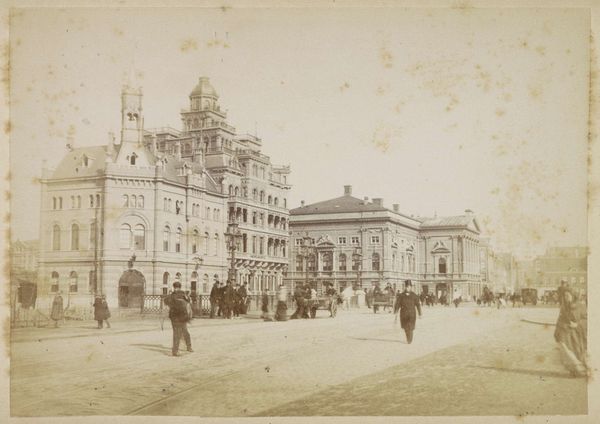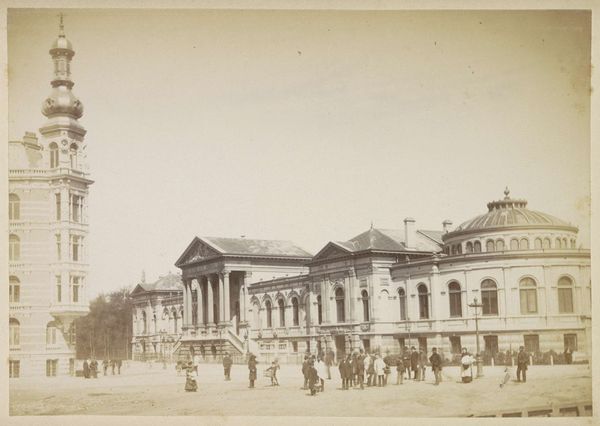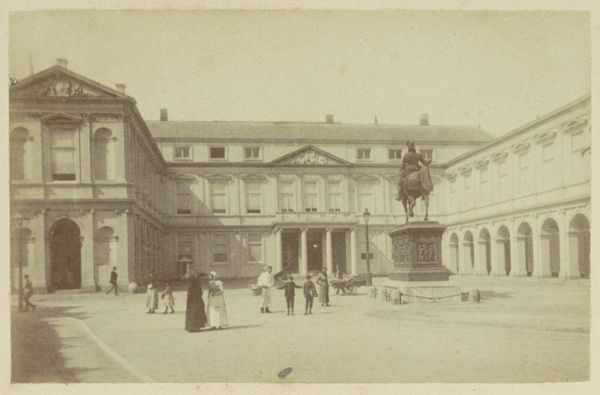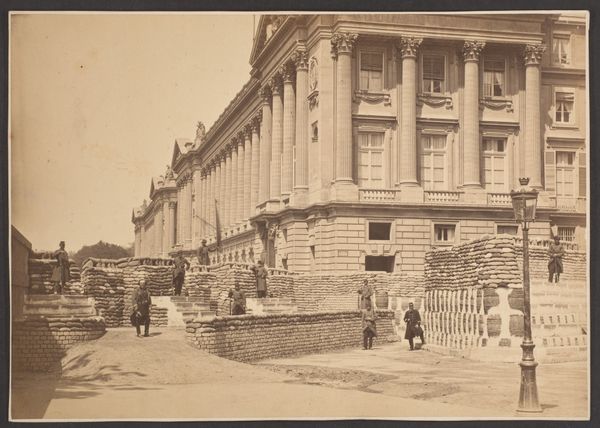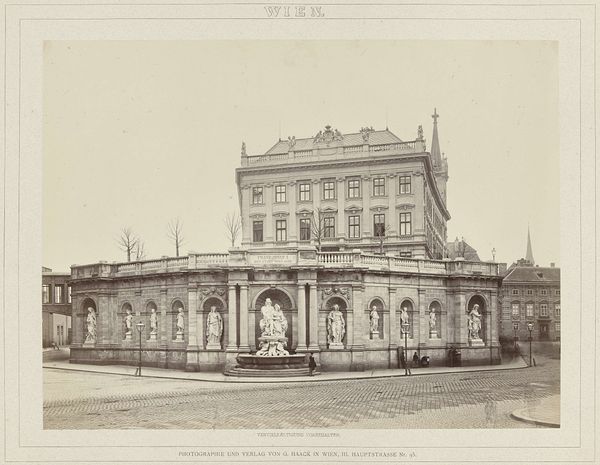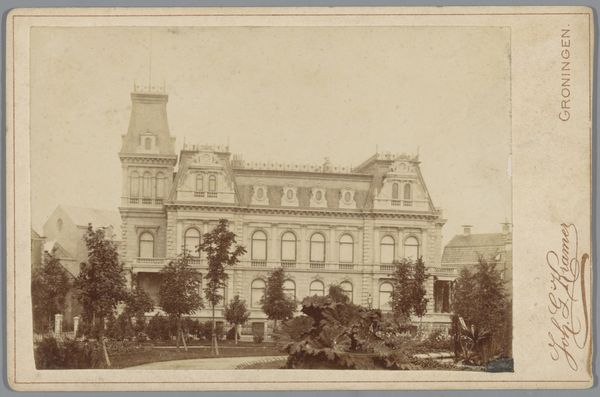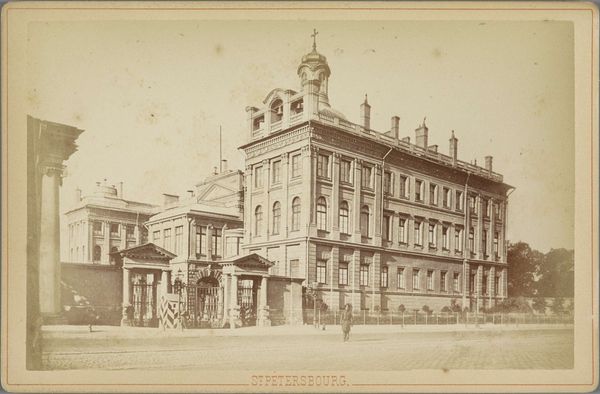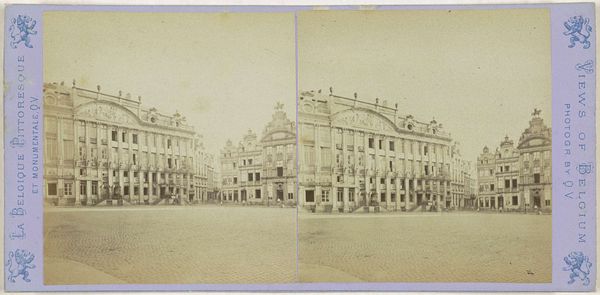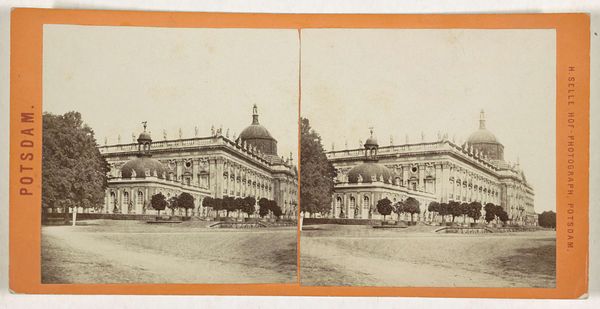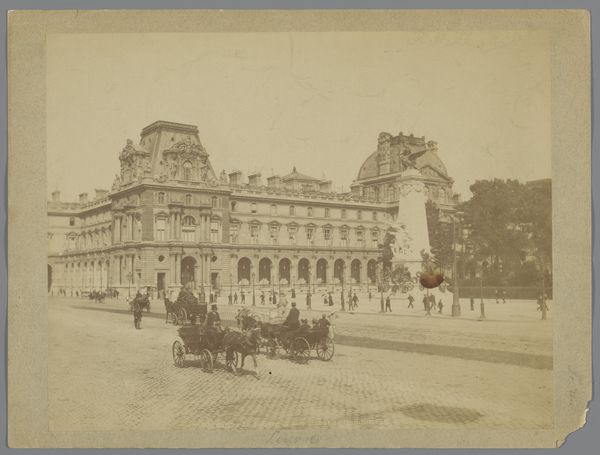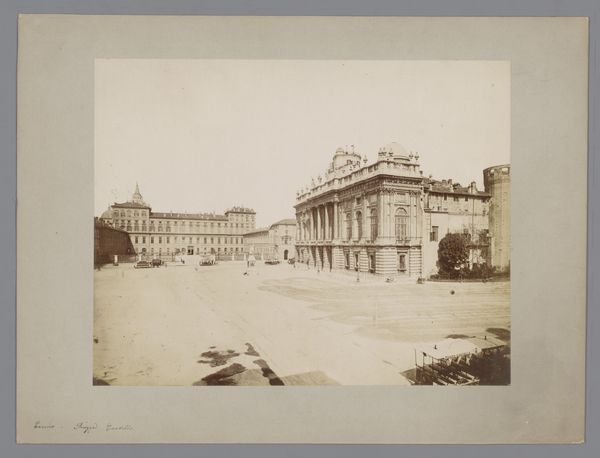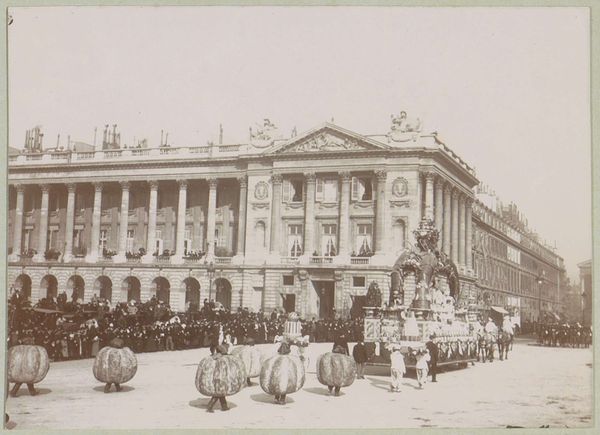
Gezicht op het Leidseplein met links het American Hotel (Américain) en rechts de stadsschouwburg c. 1860 - 1890
0:00
0:00
andriesjager
Rijksmuseum
Dimensions: height 95 mm, width 135 mm
Copyright: Rijks Museum: Open Domain
Andries Jager made this photograph of Leidseplein in Amsterdam using the wet collodion process. The material basis of the artwork is critical. Introduced in the 1850s, the wet collodion process was complex, requiring a portable darkroom for on-site preparation and immediate development of the glass plate negative. Jager would have coated a glass plate with collodion, sensitized it in a silver nitrate solution, exposed it in the camera while still wet, and then developed it. The resulting image, captured through a lens, reveals a bustling urban scene. This process, while technically demanding, democratized photography, making it accessible to a broader audience beyond the elite. The slightly faded sepia tone lends a nostalgic aura, evoking the early days of photographic innovation and its impact on documenting social life. Ultimately, considering the materiality and process invites us to think about the conditions of its production and consumption, and how this reflects a broader social and technological context.
Comments
No comments
Be the first to comment and join the conversation on the ultimate creative platform.
